Female Rage in Art
Since Auguste Toulmouche’s 1866 masterpiece The Reluctant Bride recently captured the internet’s attention, discussions about female rage...
Martha Teverson 6 May 2024
Celebrities of the floating world is the first Romanian exhibition of a private ukiyo-e collection and one of the very few of its kind in the world. In addition, it is the first that all main five themes of Japanese woodblock print, historical/heroes, beautiful women/courtesans, landscape, Kabuki theater, and shunga are present in Romania, in one exposition. The collection belongs to George Șerban, one of the most successful lawyers in Romania. Art collector and curator Alexandru Chituță chose to organize the exposition by themes and within each theme, the engravings follow a historical path.
Ukiyo-e is a type of Japanese woodblock printing and painting, specific to the Edo period (1603-1868). Ukiyo-e engravings show the activities undertaken by the bourgeoisie for the purpose of relaxation. Although the objective translation of the term “ukiyo-e” is “images of the passing world,” the bourgeoisie has interpreted it as “images of the floating world.” This nuance of the concept indicates the pleasure-seeking that this social class associates with the ephemeral joys of life.
The Celebrities of the floating world exhibition displays strictly works from the Edo period. The most famous artists from the three main ukiyo-e schools, the Torii School, the Katsukawa, and the Utagawa School are present here.
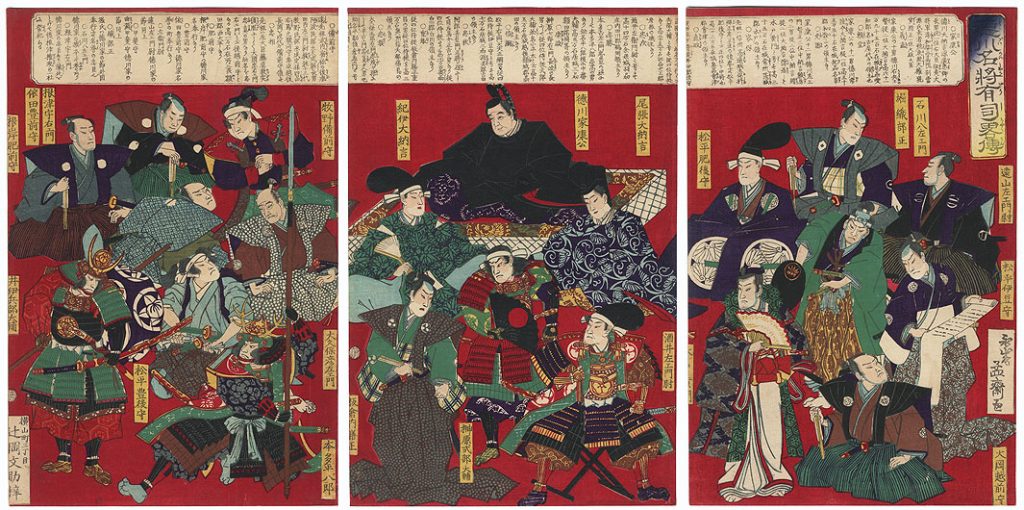
Starting with the historical scenes room, one work draws attention. It is a triptych by Utagawa Yoshitora (1836-1880) depicting the founder and first shōgun of the Tokugawa shogunate of Japan, Tokugawa (1543-1616) himself. Alongside Tokugawa, there are different images of known warriors and heroes of the era, like for instance the image below depicting an agile warrior that can defend himself against arrows, just by waving his sword.
This section also shows works from Hishikawa Moronobu (1618-1694), the famous painter considered to be the first to introduce black and white woodblock printing.
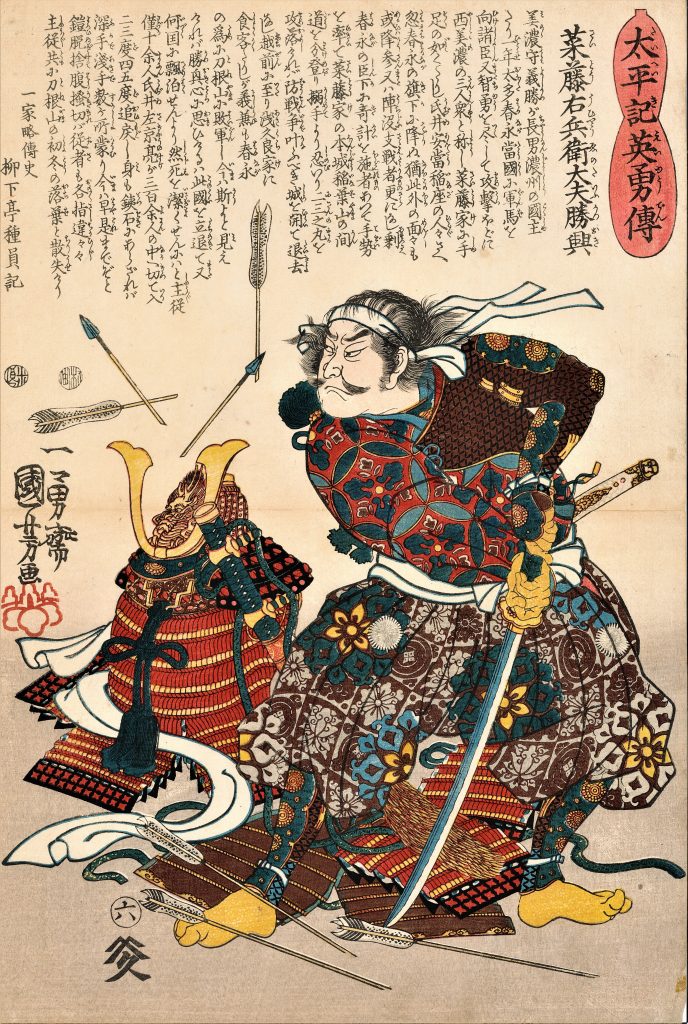
Bijin Ga (images of beauties) section has original works by important ukiyo-e artists like Utamaro (c.1753 – 1806), Kikukawa Eizan (1787-1867), or Keisai Eisen (1790-1848). This is probably one of the most known themes. The engravings show beautiful women and courtesans in different moments of their daily life, from the most banal activities like combing their hair, poetry writing, playing an instrument, to complex scenes with multiple characters and intricate costumes.
Among them, there are two Hashira-e or pillar prints, which are narrow and long Japanese woodblock prints that were originally intended to be hung upon wooden pillars inside Japanese houses.
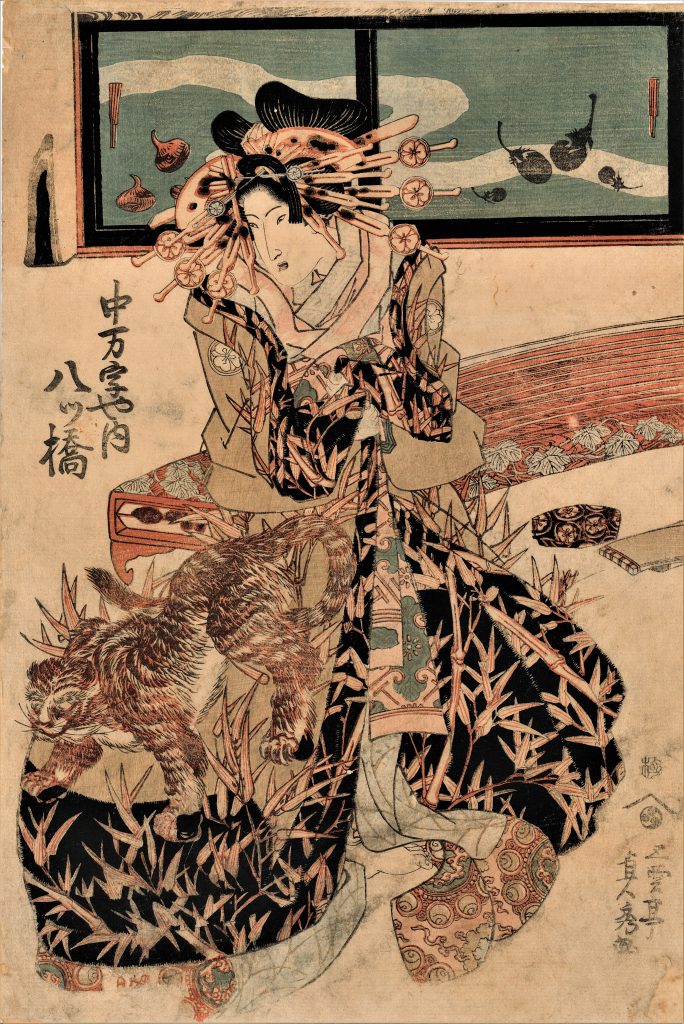
This type of engraving began featuring high-ranked women courtesans and continued in the following years with showing geisha (performers of music and dance), historic figures, or just very beautiful women of the time.
Great Wave and Red Fuji, both from the series 36 views of Mount Fuji by Katsushika Hokusai (1760-1849), are the stars of the landscape section, even if they are 20th-century editions. Next to them, we have a couple of original prints by Utagawa Hiroshige’s (1797-1858) from the Fifty-three Stations of the Tōkaidō as well as the series Eight Views of Omi.
Some of these etchings capture the variety of landscapes and the atmosphere typical to each season, others have a stronger poetical component, revealed through strong colors.
Notable in this section are five original Hokusai Manga books from around 1814. Yes, Hokusai, the creator of the famous Great Wave is also the initiator of manga books that were so successful they continue even today to make a fuss all over the world.
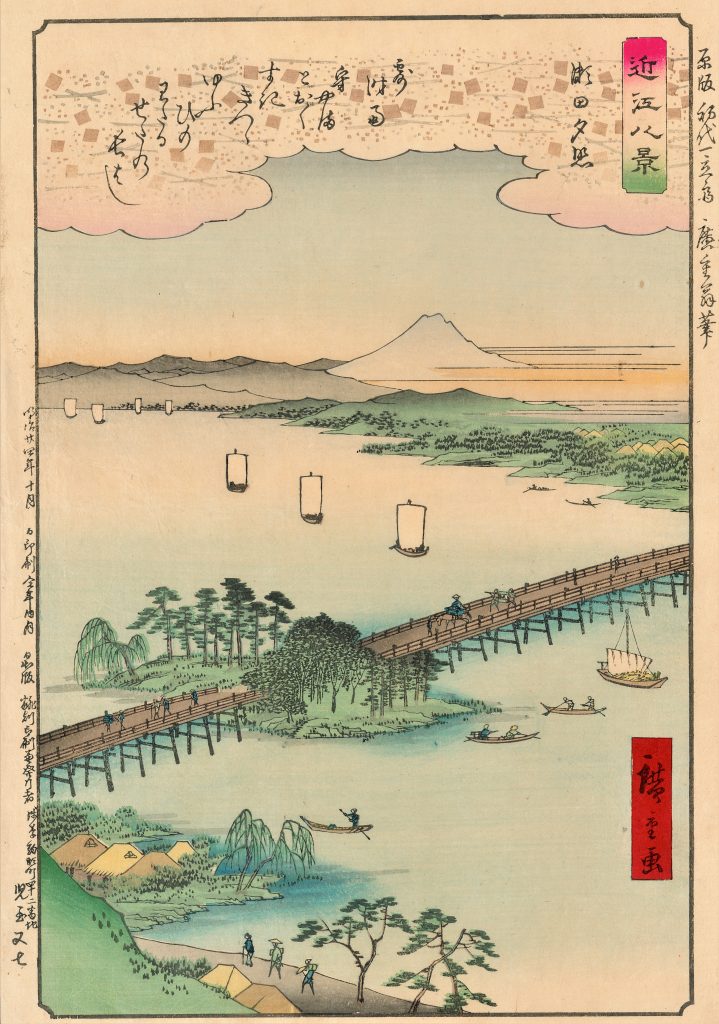
An entire room is reserved for 30 Kabuki prints. Kabuki is a form of theater that appeared around the year 1603. Specific for this type of performance is the actors’ make-up and their complex costumes. Starting from 1629 to the modern day, only men are allowed to perform. Historical legends and everyday life are the main sources of inspiration for the plays.
The prints in the exposition show a small history of the evolution of this type of engravings as well as Kabuki art. Their purpose was to popularize the art, advertise the plays and show pictures of the actors, and therefore they became collectible items, as we would collect pictures of Brad Pitt or Tom Cruise.
Unique to this section are a couple of very early prints, like the one below, by Tôshûsai Sharaku (active c. 1794-1795). Original works by Sharaku are rare in themselves, as this artist only worked for 10 months after which he mysteriously disappeared.
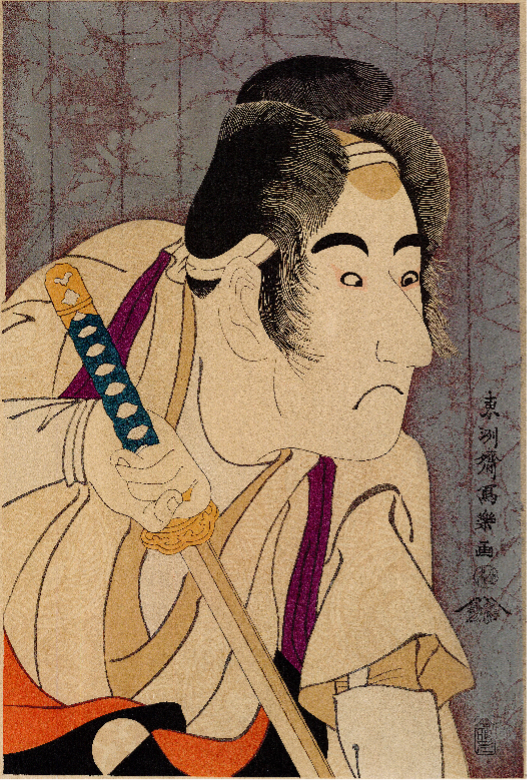
Last but definitely not least, there are two small rooms dedicated to shunga or the art of the erotic. This is also a premiere, as it is the first time an exposition shows this type of Japanese print in Romania.
The term shunga usually translates as “spring pictures, an abbreviation for “Secret images of the Spring Palace”. Most such engravings depict domestic, consensual interactions that have both a component of physical desire as well as one of emotional connection. Both men and women used Shunga engravings for multiple purposes. Shunga handscrolls were even part of young women’s dowry.
One such scroll by Katsushika Hokusai (1760-1849) is showcased. The famous Poem of the pillow by Utamaro (1850-1806) is also present in a 20th-century edition print. Other notable artist like Hishkawa Moronobu (1618-1694), Suzuki Harunobu (1724-1770), Katsukawa Suncho (1726-1792), Kikukawa Eizan (1787-1867) and Keisai Eisen (1790-1848), Utagawa Kunisada Toyokuni III (1789-1865) are also present.

This collection started in the 1980s when Șerban, while still a student, began buying books and catalogs about Japanese woodblock prints. In time, his collection reached over 1800 Ukiyo-e engravings. In 2020, he generously started organizing free entrance exhibitions in different Romanian cities. Because the main purpose of this exhibition is to educate the audience in Ukiyo-e art, video materials presenting the history and the process of creating the prints accompany the exhibition. A great number of books about ukiyo-e and catalogs of previous exhibitions of the George Șerban Ukiyo-e Collection are available for the visitors to consult. Visitors are welcomed until April 10th when the collection will move to the amazing Cantacuzino Castle in Bușteni, Romania.
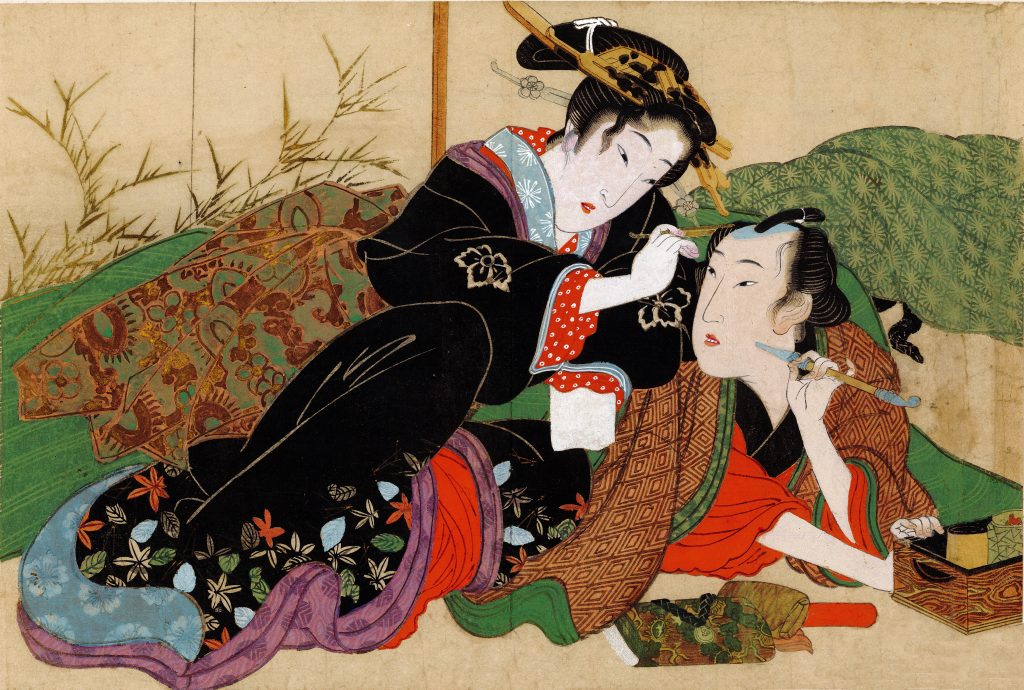
DailyArt Magazine needs your support. Every contribution, however big or small, is very valuable for our future. Thanks to it, we will be able to sustain and grow the Magazine. Thank you for your help!